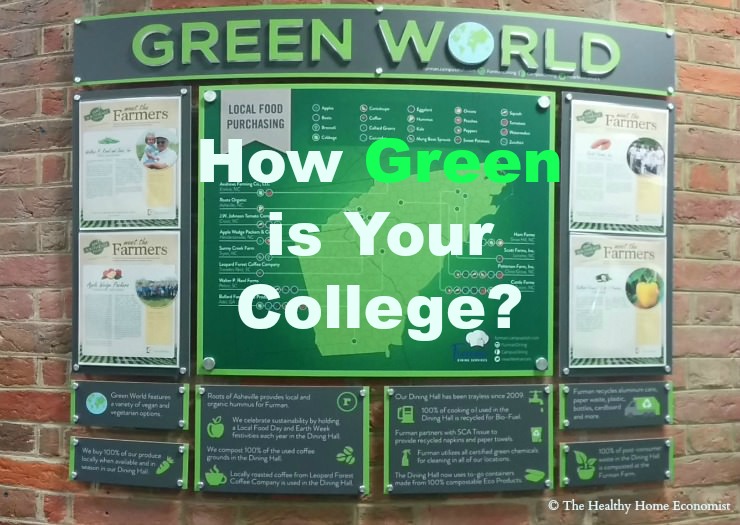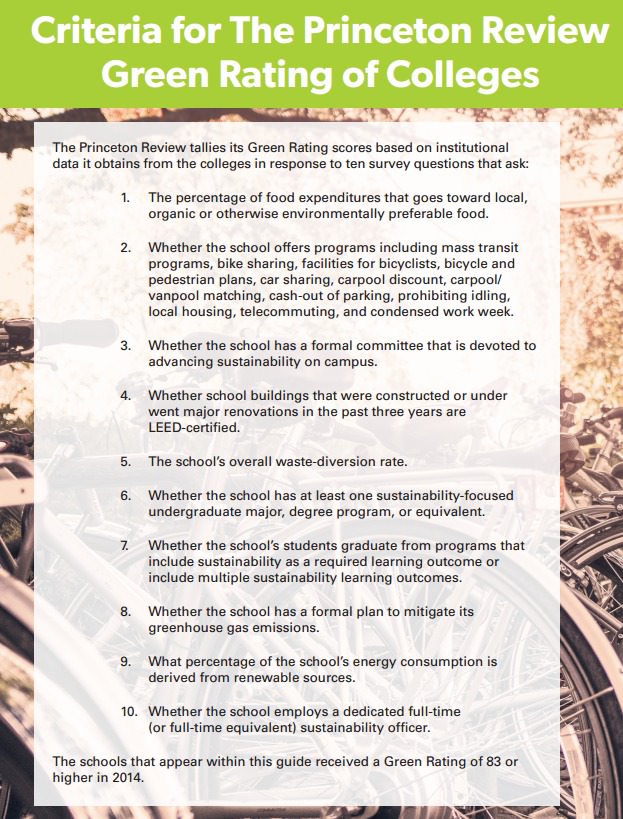 I spent time this past weekend visiting my beloved alma mater, Furman University (Go Paladins!). I hadn’t been back since my 10 year college reunion, so needless to say, there were a lot of changes for me to catch up on.
I spent time this past weekend visiting my beloved alma mater, Furman University (Go Paladins!). I hadn’t been back since my 10 year college reunion, so needless to say, there were a lot of changes for me to catch up on.
As we drove around campus checking out all the new facilities, I was startled to notice two huge solar panels across the road from the soccer stadium which apparently powered at least part of the science building. This was my first clue that something very near and dear to my heart was happening.
As we drove out the back gate to the golf course to check out the big improvements to the practice facility since I graduated, I noticed a community farm that, by the looks of it, apparently followed organic and sustainable practices.
My biggest surprise came when my son and I were walking through the beautifully renovated cafeteria overlooking the 40-acre Furman lake and bell tower.
Prominently displayed at the entrance, was the huge board pictured above.
I could barely believe my eyes! My college had indeed gone green!
I was a bit surprised at my reaction as I stood and read each and every word on that board. A lump started to build in my throat, and when I got to the part where it said that Furman University uses all certified green chemicals for cleaning throughout the entire 750-acre campus, tears started to roll down my cheeks. My son put his arm around me and gave me a squeeze.
I thought of all the thousands of kids living in the dorms and apartments on that campus that were able to study, learn, and just feel better because they were not being exposed to hormone disrupting, health robbing toxins from conventional cleaning products. All this because of the one, simple decision by the Furman administration to eliminate the use of these toxic products everywhere on campus.

I kid you not. I felt the urge to whip out my checkbook right then and there and making a big donation to the school far and beyond anything I’d ever donated before.
Other amazing green initiatives at Furman that really caught my attention include:
- 100% of the waste in the dining hall is recycled or used for composting at the Furman Farm.
- Any cooking oil used is recycled as Bio-Fuel.
- All the to-go containers used in the dining hall are made from 100% compostable Eco products.
- 100% of the produce used in the dining hall is purchased locally and in season when available. A map of the three state area where local food is procured was proudly displayed.
- Furman recycles aluminum, paper, plastic, cardboard and more.
The green initiatives and commitment to sustainability that Furman was demonstrating got me thinking about what other colleges were doing across the country.
Shouldn’t every single college and university be doing this? After all, these initiatives aren’t really that hard to implement or even expensive in most cases. They just take the commitment of a college administration that considers sustainability an important part of the university’s message to the world.
When I got home, I started to do some digging about how much sustainability has really caught on in the university environment in the United States. If our world ever hopes to change its wasteful, unsustainable ways that are stealing peoples’ health and the planet’s viability as our home, the college campus is a critical place where the needed changes really need to flourish!
I was shocked and disappointed by what I found.
Out of 4140 colleges and universities (public and private) in the United States(1), a measly 8.5% (353) are considered green with a focus on sustainability by the Princeton Review. For a full list of the 353 colleges and universities that can be considered green and sustainable, click here. I must say that I was very surprised at some of the colleges and universities that have excellent reputations that were glaringly absent from this list.
The image below details the criteria used for determining colleges and universities that are part of the sustainability solution and not part of the problem (and the ones that will get my vote for my children to attend!):

Urgent Message to College Presidents
College and university presidents, you seriously need to get your act together. Moms like me are watching you.
If your faculty and administration aren’t already promoting and practicing a green, sustainable lifestyle to your impressionable student body (bravo to those that are!) who will be the future leaders of this country, you need to get on the stick and get this done. I can assure you, your legacy will be partially judged on how you approached this issue.
At the very least, it will be a key determining factor whether we decide to send our children to your institution and donate to your projects.
Be part of the solution and not part of the problem.
Sarah, The Healthy Home Economist








I’m actually not surprised by the lack of green commitment by most universities as so many of them are funded by the industrial food and agriculture system.
Surprisingly, the big universities that get the money from Big Ag and Big Pharma were the ones doing the best on the green scale! It was some of the smaller, excellent reputation ones that I was shocked were not on the list.